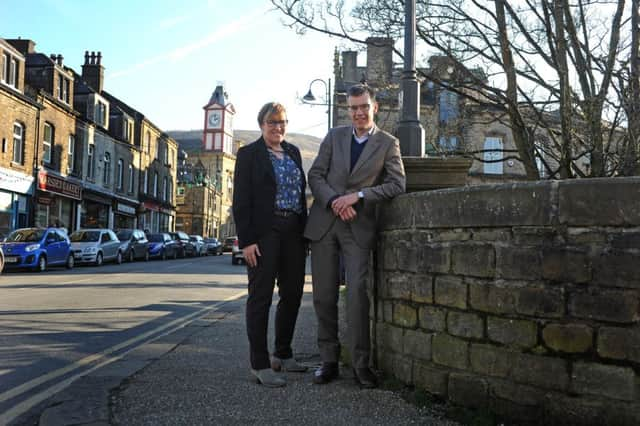Campaigners urge Gove’s envoy to protect ‘beating heart’ of the Pennines


Yesterday, its guardians seized the opportunity to persuade a government envoy to do something about it.
Straddling Yorkshire’s border with Lancashire and taking in Ilkley, Haworth, Hebden Bridge and the moors between, the 462 square miles of the South Pennines have long been a bone of contention. Considered but rejected for inclusion in the original list of national parks after the war, on the grounds that they were too industrial, their status has been debated ever since.
Advertisement
Hide AdAdvertisement
Hide Ad“There is unity over this on both sides of the border, said Helen Noble, chief executive of Pennine Prospects, a consortium of public and private bodies campaigning for the creation of a South Pennine Park.
The model for such an institution lies not in the national parks of the Yorkshire Dales and North York Moors, nor in the officially designated Areas of Outstanding Natural Beauty in Nidderdale and the Howardian Hills, but in a post-industrial landscape further south.
The Lee Valley Regional Park was created between the Thames and the Ware in the northeast of Greater London, taking in the sites of the 2012 Olympics, and Ms Noble said there was “a galvanisation of opinion” to secure something similar on the Yorkshire borders.
“We could go ahead and do it anyway, but there is an importance in getting recognition at Government level for a different approach to managing landscapes and creating a park for the 21st century,” she said.
Advertisement
Hide AdAdvertisement
Hide AdTacit recognition came yesterday in the form of Julian Glover, a writer who is conducting a review of ways to make England’s national parks and other green spaces fit for the future, on behalf of the Environment Secretary, Michael Gove.
Mr Glover had accepted an invitation to visit the area and spent the day with campaigners and officials who have drawn up plans for the first park of its kind.
Its area would take in some two-thirds of the Bradford district, including Keighley and Bingley, and would be within a half-hour’s journey of an estimated 8m people in and around Leeds, Bradford and Manchester.
“It’s the largest conurbation in the country outside London and from those city centres you can see the hills of the South Pennines,”Ms Noble said.
Advertisement
Hide AdAdvertisement
Hide Ad“The area is quite unique. It’s literally on the doorstep and that’s why it’s so important to preserve its health and wellbeing of these communities that live on the fringes of the urban areas. They are their beating heart.”
Mr Glover said the South Pennines did not fit the mould of rural national parks, but added: “You don’t have to go to the Dales or the North York Moors to find something special.”
He told The Yorkshire Post: “It is a pretty stunning landscape. But they are starting from scratch here. There is no Government designation, so they’re asking how they can work together to provide a better economy for the area, and help people understand what’s special about where they live and also get some identity.”
The National Forest, a wooded landscape being created across 200 sq miles of the West Midlands, could be a model for the South Pennines, Mr Glover suggested.
Advertisement
Hide AdAdvertisement
Hide Ad“All sorts of creative things can take place without having to create big bureaucratic structures,” he said.
“The National Forest didn’t take legislation or big bureaucracy, it just took a great idea, commitment and energy to make it happen.
“Some of it is just getting people together, bridging areas that don’t always talk to each other. “